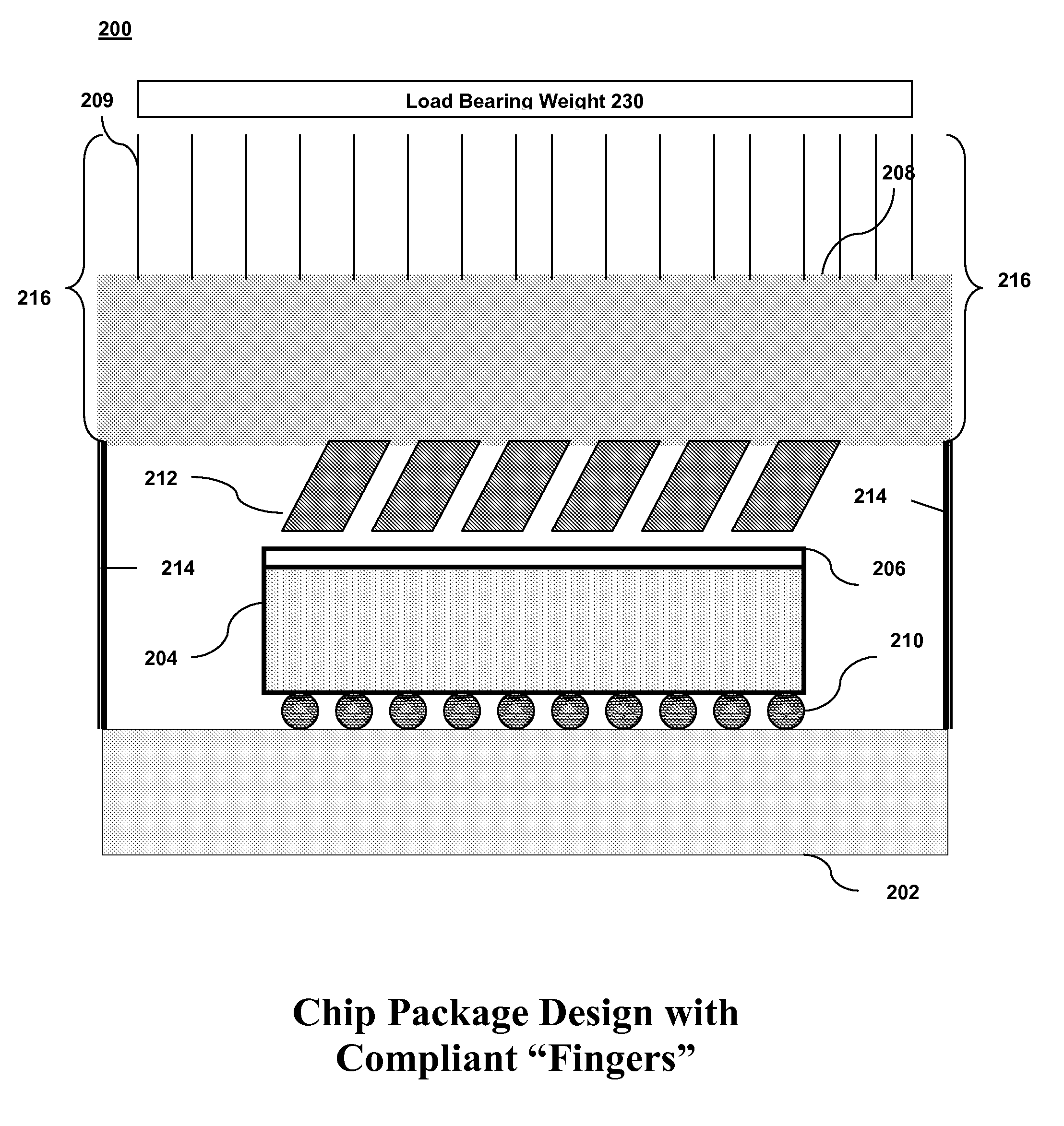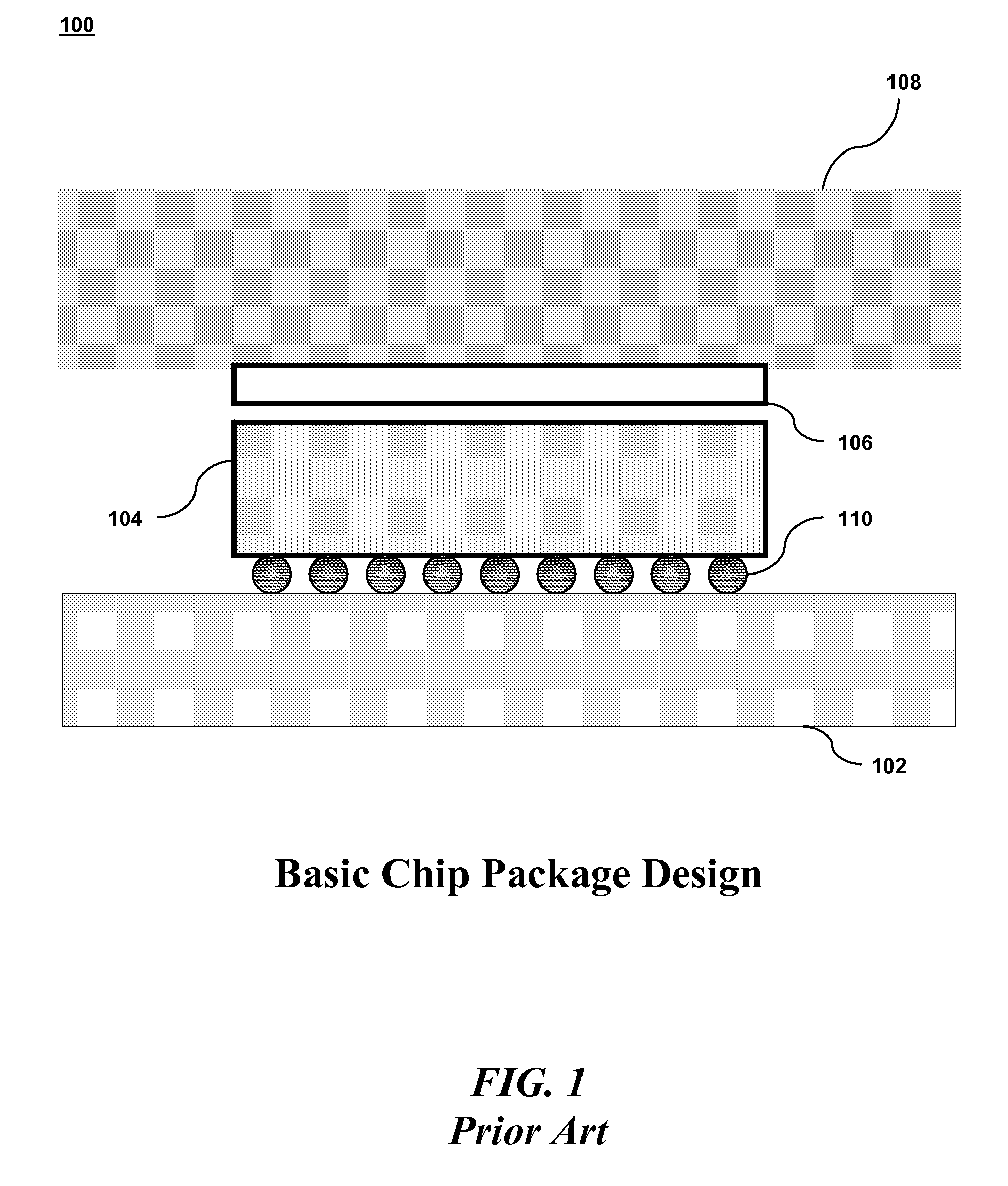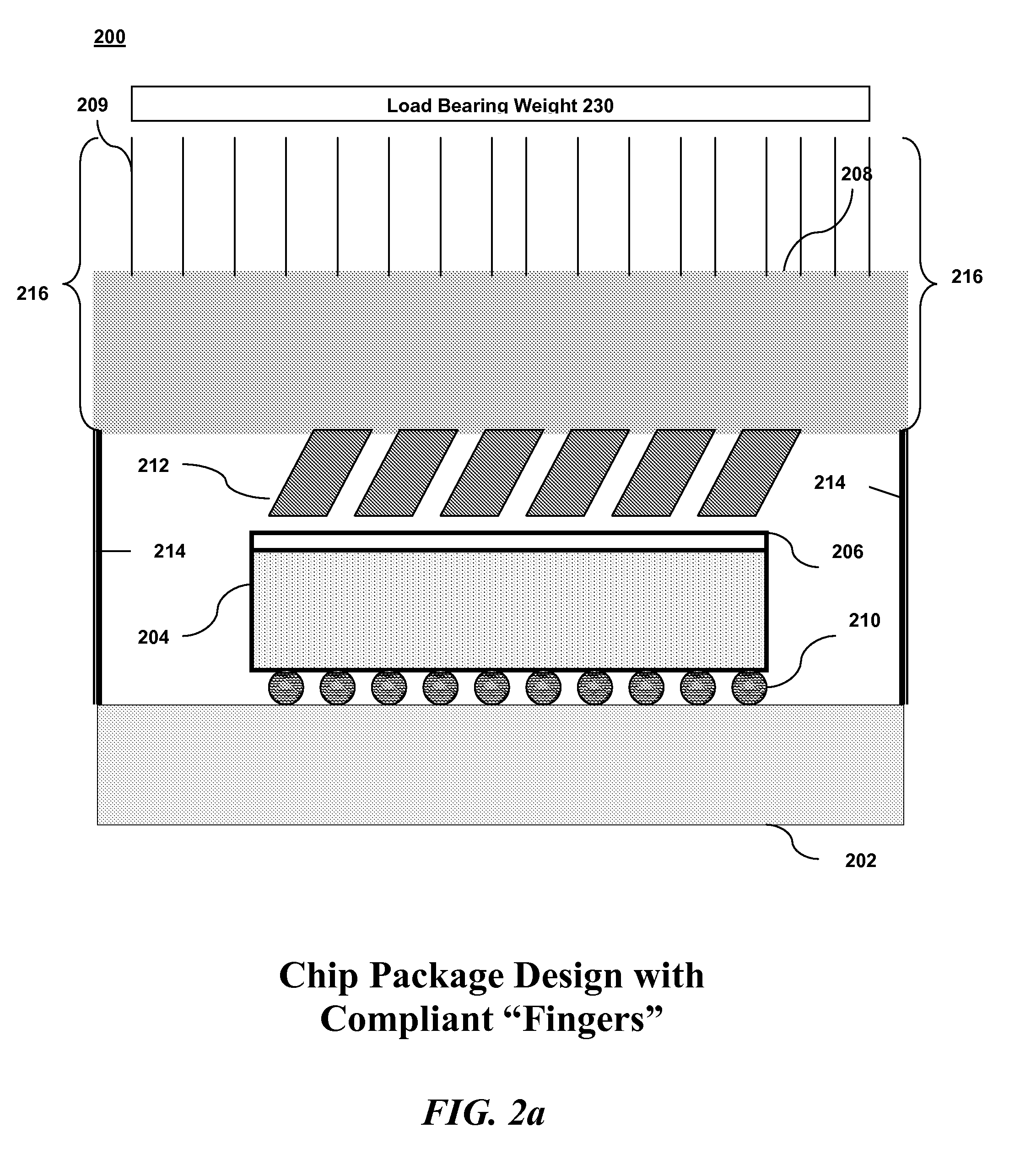Heat sink with thermally compliant beams
a heat sink and beam technology, applied in the direction of cooling/ventilation/heating modification, semiconductor device details, semiconductor/solid-state device details, etc., can solve the problems of thermal interface failure, pressure on the interface, and preheating of the heat sink, and achieve the effect of enabling thermal conduction, high thermal conductivity and compliance, and small or zero gap
- Summary
- Abstract
- Description
- Claims
- Application Information
AI Technical Summary
Benefits of technology
Problems solved by technology
Method used
Image
Examples
Embodiment Construction
[0024]We describe a novel, low-cost heat sink structure which provides compliance in all directions while maintaining a gap of substantially zero between the chip and heat spreader. Compliance is achieved through the use of angled beams.
[0025]Referring now in specific detail to the drawings, and particularly FIG. 2, there is illustrated a block diagram of a chip package with compliant “fingers”212 according to an embodiment of the invention. To create the fingers a copper alloy or other high conductivity material block is machined to produce compliant “fingers” which contact the chip. The fingers 212 are machined such that they make contact with the chip at an angle relative to the chip surface, providing compliant beams which are able to bend in response to changes in the relative position of the chip 204 to the heat spreader 208 in the X, Y, and Z directions. The fingers 212 may be fabricated by cutting a solid copper alloy block at an angle in an X-Y pattern to a predetermined de...
PUM
 Login to View More
Login to View More Abstract
Description
Claims
Application Information
 Login to View More
Login to View More - R&D
- Intellectual Property
- Life Sciences
- Materials
- Tech Scout
- Unparalleled Data Quality
- Higher Quality Content
- 60% Fewer Hallucinations
Browse by: Latest US Patents, China's latest patents, Technical Efficacy Thesaurus, Application Domain, Technology Topic, Popular Technical Reports.
© 2025 PatSnap. All rights reserved.Legal|Privacy policy|Modern Slavery Act Transparency Statement|Sitemap|About US| Contact US: help@patsnap.com



